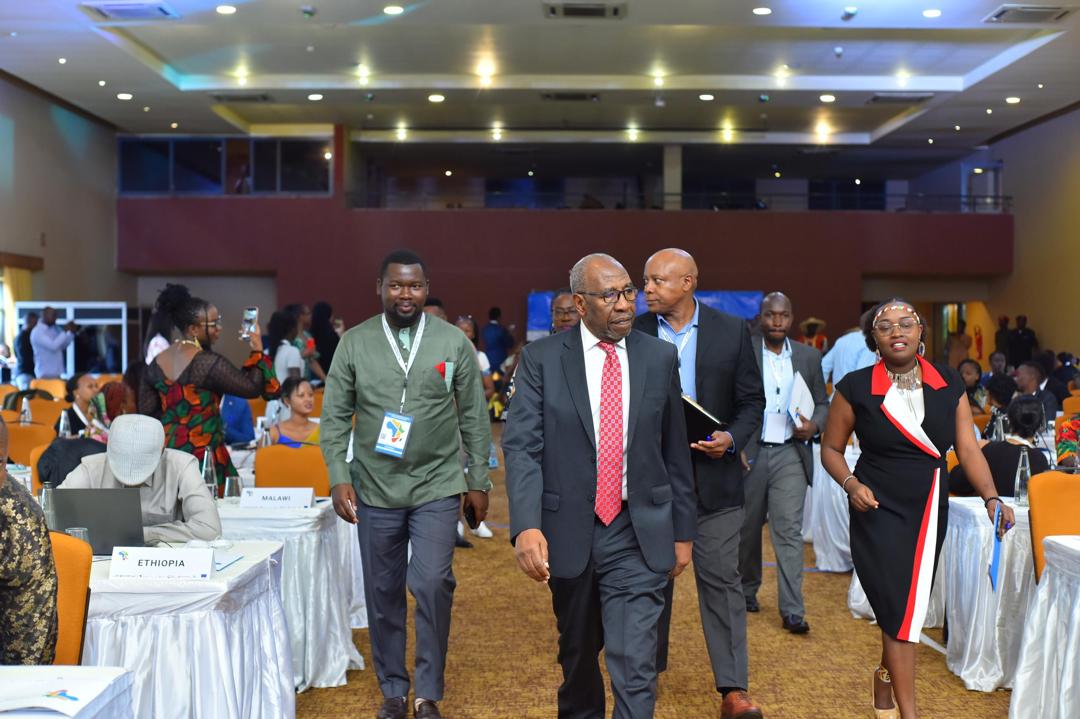Prime
Kapchorwa: The Land of sports, beauty

Tourists take pictures at the famous Sipi Falls while right. PHOTOS BY Allan Chekwech
What you need to know:
The district, famous for producing Olympic and world gold medallist Stephen Kiprotich, and also known for once harbouring female genital mutilation, has more on its face to show the world than the world knows
Kapchorwa.
Kapchorwa which loosely translated, means a ‘friend’s place’ is located on the slopes of Mt Elgon in eastern Uganda. The location of Kapchorwa gives it the sparkling and breath-taking scenery and a natural charm that attracts tourists. The warm welcome the Sabiny will give you contradicts the ever cold environment.
Perhaps, this gives a more appealing feeling that the steadily-growing beautiful country has plenty to offer for those who are prepared to see beyond their air-conditioned safari trucks and satellite-TV hotel rooms.
The district, famous for producing Olympic and world gold medallist Stephen Kiprotich, and also known for once harbouring female genital mutilation, has more on its face to show the world than the world knows.
Located 62km from Mbale Town, Kapchorwa, the mother district of Bukwo and Kween districts, is home to several attractive features.
Location
The district is bordered by Kween to the north and east, Sironko to the south and Bulambuli District to the northeast.
Population
The 2002 national census estimated the population of the district at about 74,300, with an annual population growth rate of about 2 per cent. It is estimated that the population of Kapchorwa in 2010 had grown to about 87,000.
Agriculture
Subsistence agriculture is the main economic activity in Kapchorwa District. Crops grown include Millet, potatoes, beans, simsim, sunflower, cotton, coffee, wheat, tomatoes, cabbage, wheat, maize, barley, passion fruits, etc. Animal husbandry is also practised; the livestock domesticated are mainly cattle, goats and chicken.
History
Under the colonial administration, Kapchorwa District was Sebei County, located in North Bugisu in the now defunct Bukedi District. Kapchorwa was granted district status on February 1, 1962, shortly before Uganda became an independent country.
Kapchorwa District is home mostly to Kalenjin people, including the sub-groups: Sabiny, Pokot and Nandi. They were mainly cattle keepers in the late 1960s but a change was seen when their northern neighbours, the Karimojong, raided most of their cattle, and displaced hundreds of people.
The populations most affected lived along the Kapchorwa plains; particularly in Ngenge Sub-County of Kapchorwa District and in Bukwo.
Tourist attractions
Teryet
This is where the government plans to build the high altitude training centre. Located in Kwoti, Kapchesombe Sub-county, the area offers a great view of Mt Elgon forest more of Sebei’s blessings. The beautiful rocks, water and vegetation will steal your attention. It is here that Atari River starts and this is where Kapchorwa town taps its water from.
Kapkway Exploration center
There are several trekking trails around Mt Elgon, all open to everybody as this is not a difficult mountain to climb (Sasa, Sipi and Piswa trials). The full trekking circuit to the peak takes between five to six days to complete. The nature walks allow you to see flora and fauna, the enormous caves, gorges and hot springs.
One day hikes are possible from the Forest Exploration Centre at Kapkway, Kapchorwa District. Particularly fascinating is the hike from Sipi Trading Centre to the Sipi Falls, a series of four pretty waterfalls culminating in a 99m drop along the River Sipi, which originates from Mount Elgon.
Sipi Falls
Sipi Falls is a series of three waterfalls located in Sipi Sub-county. There are a number of lodges and backpackers / campsites in the area offering a range of accommodation for all budgets.
With a cooler climate than most of the country Sipi Falls is a nice place to unwind, relax and literally chill out away from the hustle and bustle of the towns and cities. Being on the foothills of Mt. Elgon, Sipi offers a number of alternative activities to the mainstream river activities in and around Jinja. Rob’s Rolling Rock, a local outfit trained by Italian climbers offers abseiling along the side of the main 100m Sipi waterfall as well as climbing on 14 bolted sport routes with a range of difficulty. Other activities include hiking around the local area and visiting the
local waterfalls.
The Sipi River is named after the ‘Sep’, a plant indigenous to the banks of the River. Resembling a type of wild banana, Sep is a medicinal plant, the translucent green frond with a bolt of crimson rib is used for treating measles and fever. Sipi River Lodge, Lagam Lodge, and Crown’s Nest, among others, offer accommodation in Sipi.




